Electric Circuits
1/55
There's no tags or description
Looks like no tags are added yet.
Name | Mastery | Learn | Test | Matching | Spaced |
|---|
No study sessions yet.
56 Terms
Define electrical current
Electrical current is the rate of flow of charge
State the defining equation for current.
I = ΔQ/Δt
What is the unit of current?
Ampere (Amps), A
Define voltage
Voltage is the work done per unit charge.
State the defining equation for voltage
V = W/Q
What equation links current, voltage and resistance?
Voltage (V) = Current (A) x Resistance (Ω)
V = IR
What is Ohm's Law?
If Ohm's law is obeyed, the current and voltage passing through a component are directly proportional, when at a constant temperature.
Describe the distribution of current in a series circuit.
In a series circuit, the current is the same at all positions in the circuit.
What law is the distribution of current in a series circuit a consequence of?
The law of the consequence of charge. Charge cannot be created or destroyed and so in a closed loop, the flow of charge must be the same throughout.
Describe the distribution of current in a parallel circuit.
In a parallel circuit, the current is split between the different branches. The current entering each branch must be the same as the current leaving it.
Explain how the conservation of charge applies to parallel circuits.
Charge cannot be created or destroyed meaning the total current leaving the source must equal the sum of the currents in all the individual branches
What law is the distribution of potential differences in a circuit a consequence of?
The law of the conservation of energy.
Describe the distribution of potential differences in a series circuit.
The total potential difference is split across all the components in a series circuit, in the ratio of their resistances.
Describe the distribution of potential differences in a parallel circuit.
The sum of the potential differences in each branch of a parallel circuit, is the same and will be equal to the potential difference of the source.
What equation relates power, current and potential difference?
P = IV
How can you calculate the work done over a given time period, by a component with a known potential difference and current?
Combining P = W/t and P = IV gives :
W = IVt
What is the IV characteristic for an ohmic conductor?
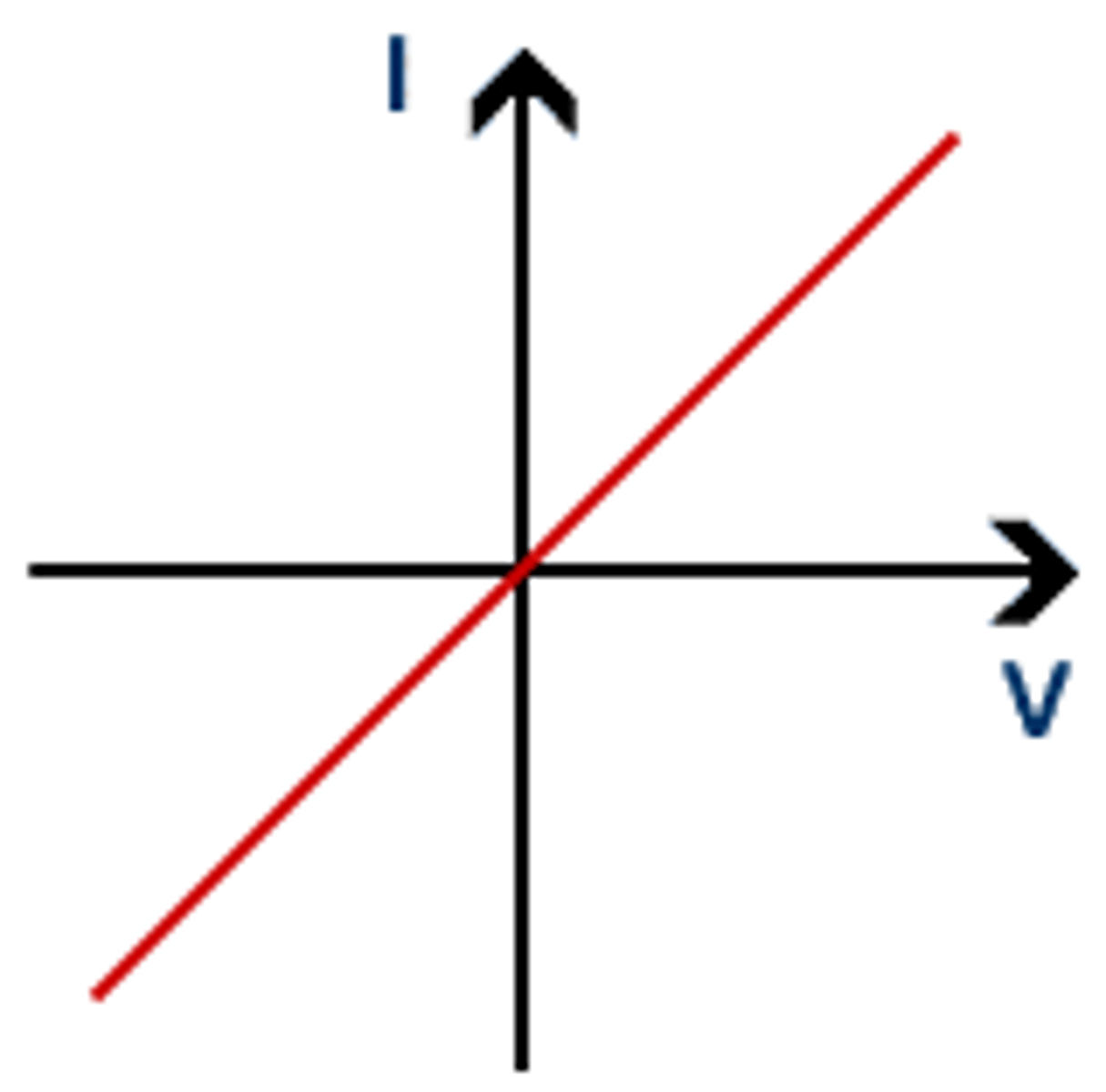
What is the IV characteristic for a filament bulb?
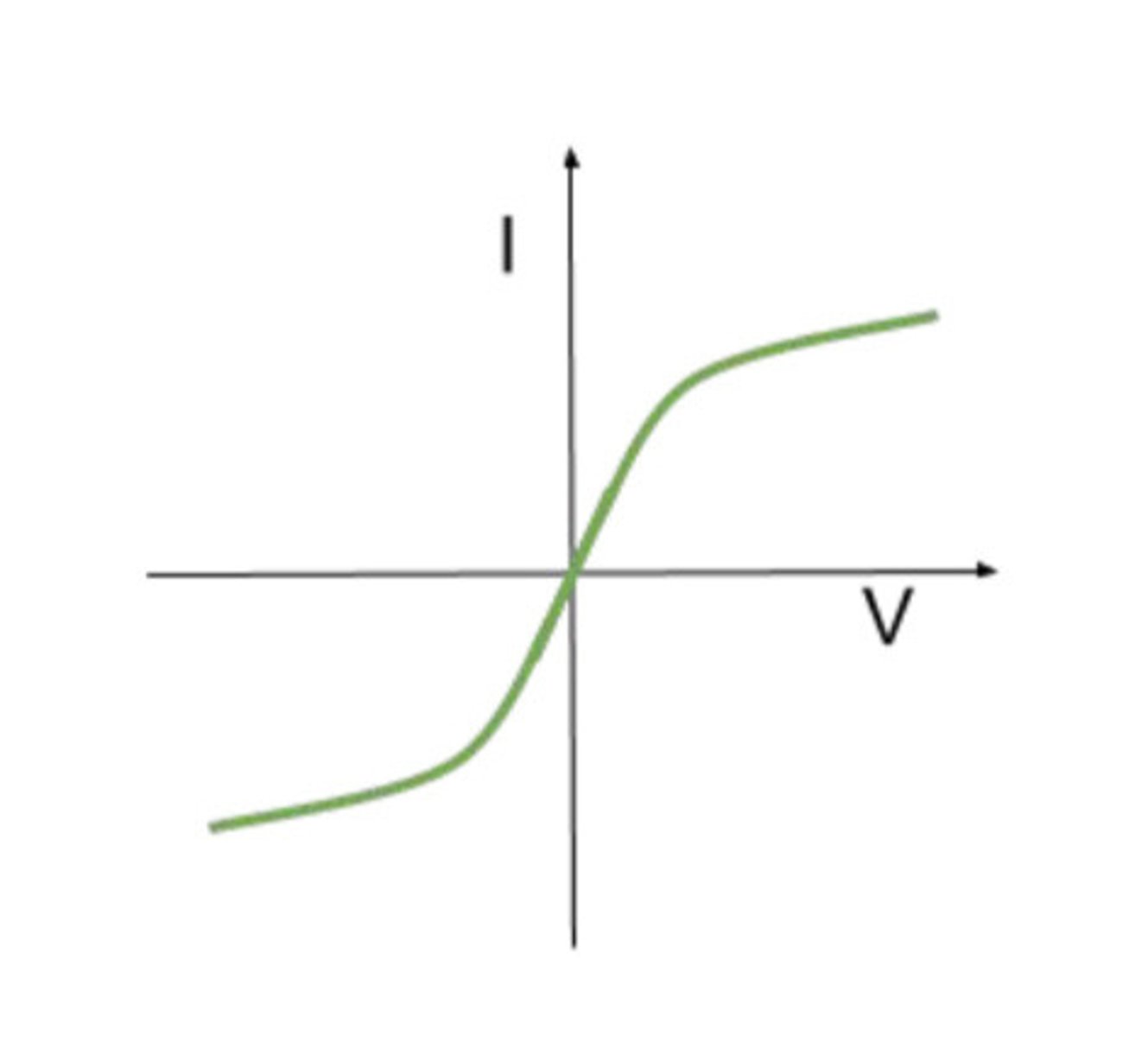
What is the IV characteristic for a diode?
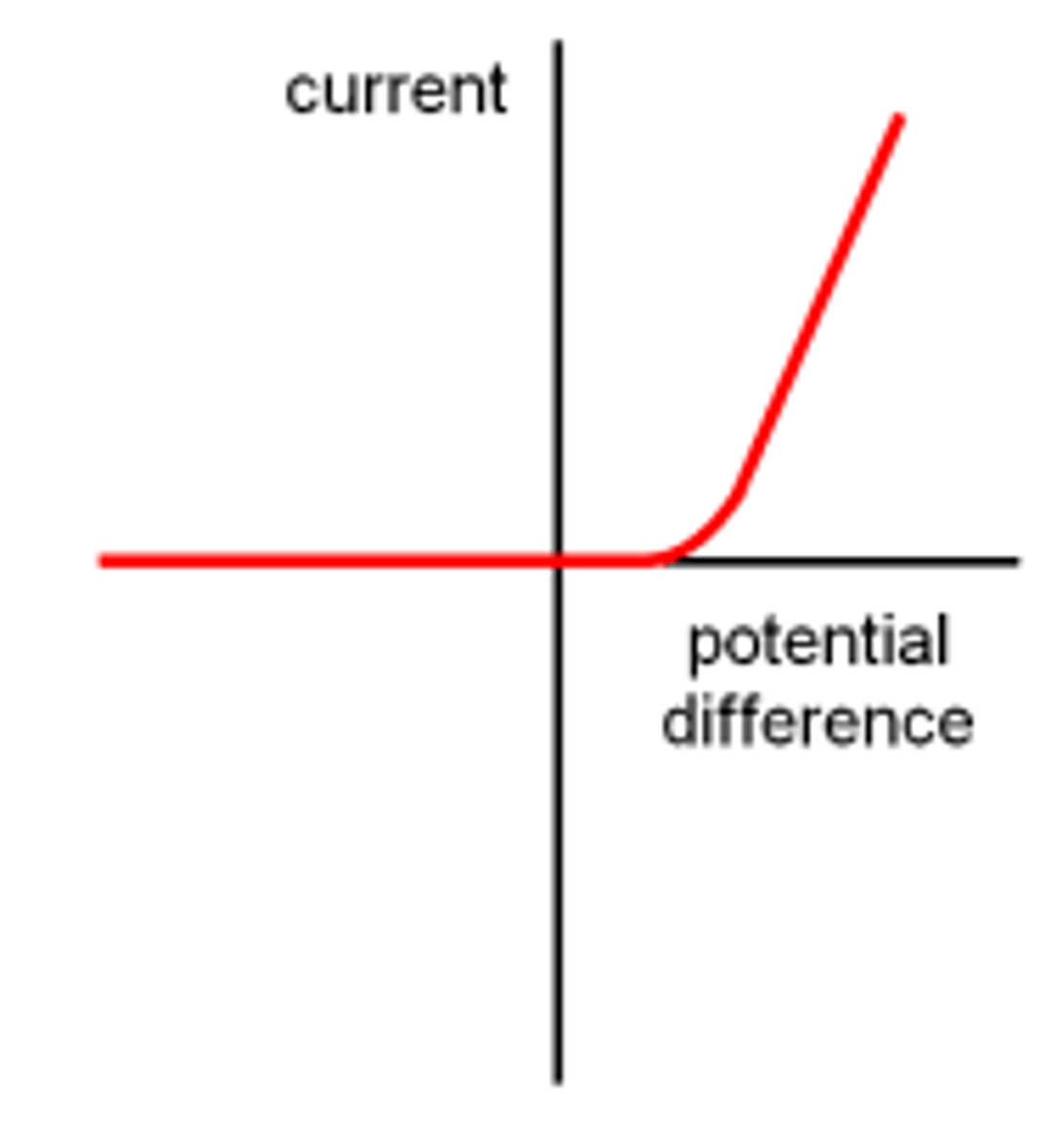
Explain the IV characteristic for a filament bulb.
- The higher the current, the higher the temperature of the metal filament
- The higher the temperature, the higher the KE of the metal ions and so the more they vibrate
- This makes it harder for current to flow and so the resistance of the bulb increases
What three physical factors affect the resistance of a wire?
1. Length
2. Cross-Sectional Area
3. Resistivity
How does increasing the length of a conductor affect its resistance?
The longer the conductor is, the higher its resistance, assuming all other factors remain the same.
How does increasing the cross-sectional area of a conductor affect its resistance?
The larger the cross-sectional area of a conductor, the lower its resistance, assuming all other factors remain the same.
What is resistivity?
A characteristic property of a material that determines its resistance to current flow
Compare the resistance of two conductors of the same dimensions, but with different resistivities
The conductor with the higher resistivity, will have the higher resistance.
State the equation linking the factors affecting the resistance of a conductor.
R = ρl/ A
What equation links the number of charge carriers in a metal, along with their drift velocity, to the current flow?
I = nqvA
How does the potential vary along a uniform current-carrying wire vary as you move along it?
The potential will increase as you move along the wire
What is the electromotive force of a power supply?
The electromotive force is the amount of energy that is transferred to each Coulomb of charge that passes through it.
What is the terminal potential difference of a power supply?
The terminal potential difference of a power supply is the actual potential difference that is produced across the terminals of the supply and is provided to the circuit
Why does the electromotive forces of a supply differ from its terminal potential difference?
Some of the energy that is transferred to the charges is used to overcome the internal resistance of the power supply
Define internal resistance
The internal resistance of a power supply is the electrical resistance, when a current flows, due to the materials within the supply itself
Describe a method to determine the terminal potential difference of a battery.
Attach a voltmeter directly across the terminals of the battery when it is isolated. Since no current flows, no potential is lost due to internal resistance and so the voltmeter will read the value of the terminal p.d.
What is semiconductor?
A semiconductor is a component that can change its resistance based on external conditions.
Give two examples of semiconductors and state what they are sensitive to.
1. Thermistors are sensitive to temperature.
2. LDRs are sensitive to light.
Describe how the resistance of a thermistor changes as temperature decreased.
As temperature decreases, the resistance of a thermistor will increase.
Explain why the resistance of a thermistor will decrease with an increase of temperature.
As temperature increases, conduction electrons are liberated, meaning there are more charge carriers, and so current can flow more easily.
Describe how the resistance of a LDR changes as light intensity increases.
As light intensity increases, the resistance of a LDR will decrease.
What is a potential divider?
A potential divider is a pair of resistors used to split the potential difference over them in a given ratio
What is the link between the resistances and the potential differences in a potential divider?
The potential difference of the circuit is split in the ratio of the resistances of the resistors.
How would the potential difference over R₂ change as the light intensity increases in the following circuit?
As light intensity increases, the resistance over the LDR will decrease. This means that the fixed resistance R₂ will take a larger ratio of the circuit potential and the potential difference across it will increase.
Current is defined as the rate of flow of charge in a circuit. It is measured in Amperes.
1 Ampere is the current flow when 1 Coulomb of charge passes each second.
As an equation, current is defined as:
I= ∆Q/∆t
There are two ways of describing current flow:
1. Electron flow is from negative to positive and is the direction that electrons actually flow in a circuit.
2. Conventional current flow is from positive to negative and is more commonly used to describe the direction of current
Potential difference is equal to the work done per coulomb of charge travelling in a circuit
As an equation, this is defined as:
V = W/Q
Potential difference is measured in Volts, where 1 Volt, is equal to 1 Joule of work being done by each Coulomb of charge.
To measure the potential difference over a specific component, a voltmeter can be used. It should be connected in parallel over the component.
An ideal voltmeter has infinite resistance, so that no current is drawn from the circuit.
Resistance is measured of how difficult it is for current to flow in a circuit. It is directly proportional to the potential difference in a circuit, and inversely proportional to the current flow.
As an equation it is defined as:
R = V/I
It is measured in Ohms
An ohmic conductor is a conductor which follows Ohm's law, meaning that the current flowing through it is directly proportional to potential difference, when it is held at a constant temperature

The resistivity of a material is a measure of how easily it allows charge to flow through it and depends on several different factors.
Combining these factors allows an equation for resistivity to be formed:
ρ = RA/L
The unit for resistivity is Ωm
They are:
1. Cross sectional area - the greater the area, the easier the passage of electrons
2. Length - the longer the length, the harder it is to send a current through it
3. Resistance - the larger the resistance through a material, the larger its resistivity
The current (I) through a wire can be measured using the following equation:
I=nqvA
where-
n= the density of charge carriers (m⁻³)
q= the charge of charge carriers (usually 1.6 x10⁻¹⁶)
v= the velocity of the charge carriers (ms⁻¹)
A= the area of the wire (m²)
Therefore, materials have a large range of resistivities since the denisty of charge carriers (free electrons) in them varies greatly.
When you increase the length of a wire, the resistance across it also increases following the equation
R = ρL/A
As potential difference (V) is equal to the product of current and resistance (V=IR), the potential across the wire also increases with length
Superconductors are materials which have zero resistivity at and below a critical temperature.
This temperature differs for each material, but currently are too low to be used effectively.
If materials with high enough critical temperatures can be developed, they could be use in electricity transmission to reduce energy loss as well as in the production of extremely strong magnetic fields.
Semiconductors are components for which the resistance changes depending on external conditions. The two main types are:
1. Light Dependent Resistors (LDR'S) are light sensitive components - when light intensity increases, electrons in the LDR are released and so its resistance decreases. This is because the number of conduction electrons increases.
2. Thermistors are temperature sensitive components - when their temperature increases, electrons in the thermistor are released and so its resistance decreases. This is because the number of conduction electrons increases.
Power is defined as the rate of energy transfer. It can be calculated using:
P=W/t
The unit of power is the Watt, where 1 Watt is the power dissipated when 1 joule of energy is transferred each second.
Power can also be defined by combining the above equation with the equations defining potential difference, resistance and current to give
P = IV = I²R = V²/R
I-V characteristics
Filament Lamp;
When a filament bulb is used, as current is increased, the temperature of the filament increases. This causes the metal ions to vibrate with more kinetic energy and consequently, makes it harder for the charge carriers to pass through. This mean the resistance increases.
Diode:
Diodes are components that only let current flow through in one direction. In the opposite direction the resistance is very high and means current can't flow through. In the correct direction, diodes have a threshold voltage of around 0.6V, after which current can flow through normally
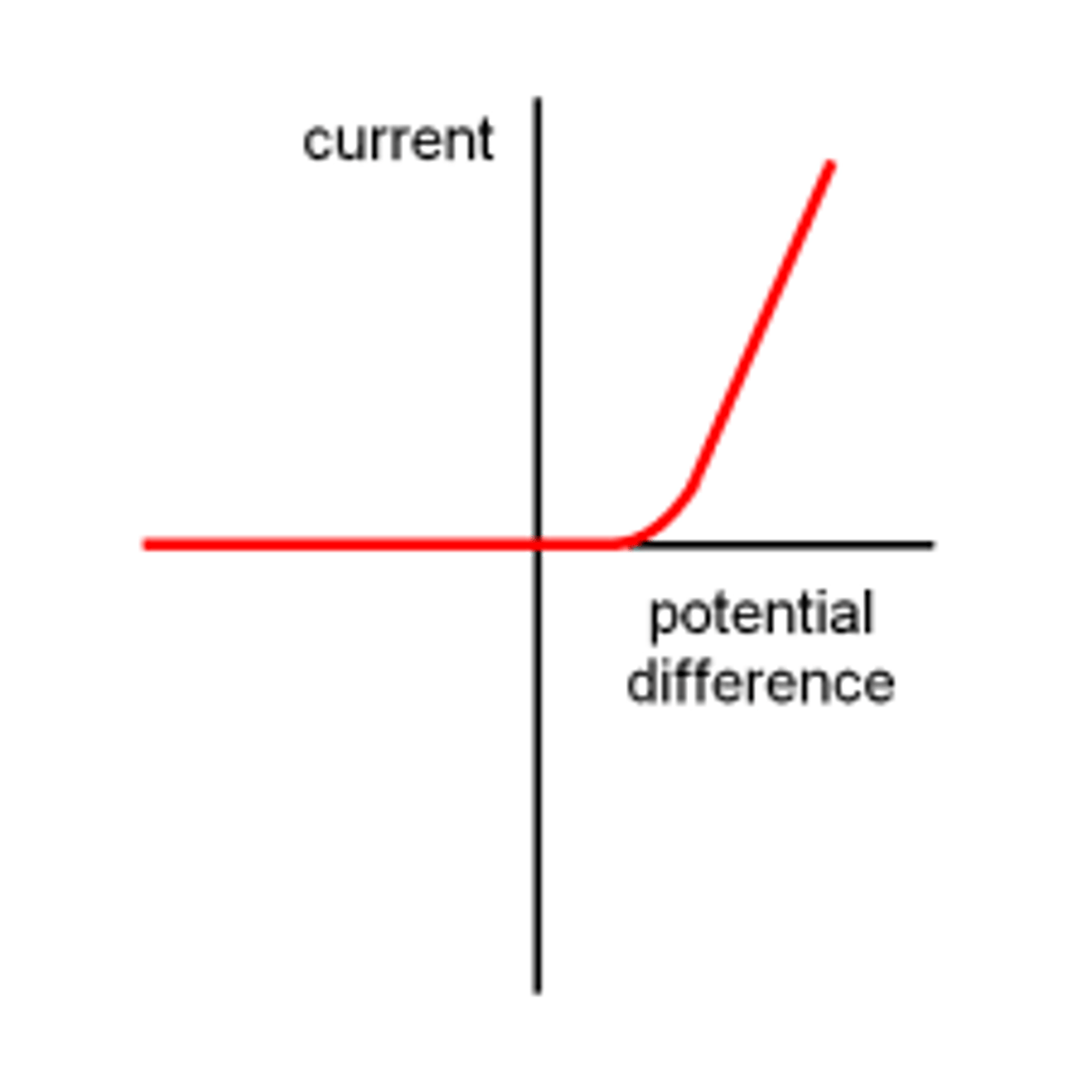
Series circuits are ones where all the components are part of the same loop. You need to know that:
- The current is the same in all positions in a series circuit
- The potential difference over the loop is split between all the components, in the ratio of their resistances
Parallel circuits are ones where the components are in adjacent loops. You need to know that:
- The potential difference over each loop is the same
- The current is split between each branch and so is different in different parts of the circuit.
Kirchhoff's Laws
Energy and charge are conserved in circuits which means that e.m.f and current are too (as they're related to energy and charge respectively)
Kirchhoff's 1st Law:
The total current entering a junction is equal to the total current leaving it.
I□=I₁+I₂+I₃...
V/R□ = (V/R₁) +(V/R₂) +(V/R₃)
1/R□ = (1/R₁) +(1/R₂) +(1/R₃)
From this we can derive total resistance in a parallel circuit as shown above
Kirchhoff's 2nd Law:
The sum of e.m.f in any loop of the circuit is equal to the sum of the p.d's of each component
ε =∑IR
IR□=IR₁+IR₂+IR₃...
R□=R₁+R₂+R₃...
From this we can derive total resistance in a series circuit as shown above.
All power sources have a value for their EMF.
Electromotive force can be defined as the amount of energy supplied by the source per unit charge. It is measured in Volts.
In reality, the terminal potential difference of the power source is never equal to this EMF value. This is because energy is dissipated within the source due to the cell's internal resistance.
Internal resistance can be described as the opposition to the flow of charge within a cell.
ε = I R + I r
ε = V + rl
V = -rl +ε
y = mx +c
You can plot a graph of the terminal voltage against current. The y-intercept will be the e.m.f and the gradient will be the negative internal resistance.
A potential divider is a combination of two or more resistors in series, which results in the potential difference in the circuit being split into a specific ratio. By choosing the correct values of resistance for the resistors, a desired output voltage (V-out) can be obtained.
A component's pd as a fraction of the total e.m.f will be equal to its resistance as a fraction of the total resistance:
P.D₁/∑ε = R₁/∑R
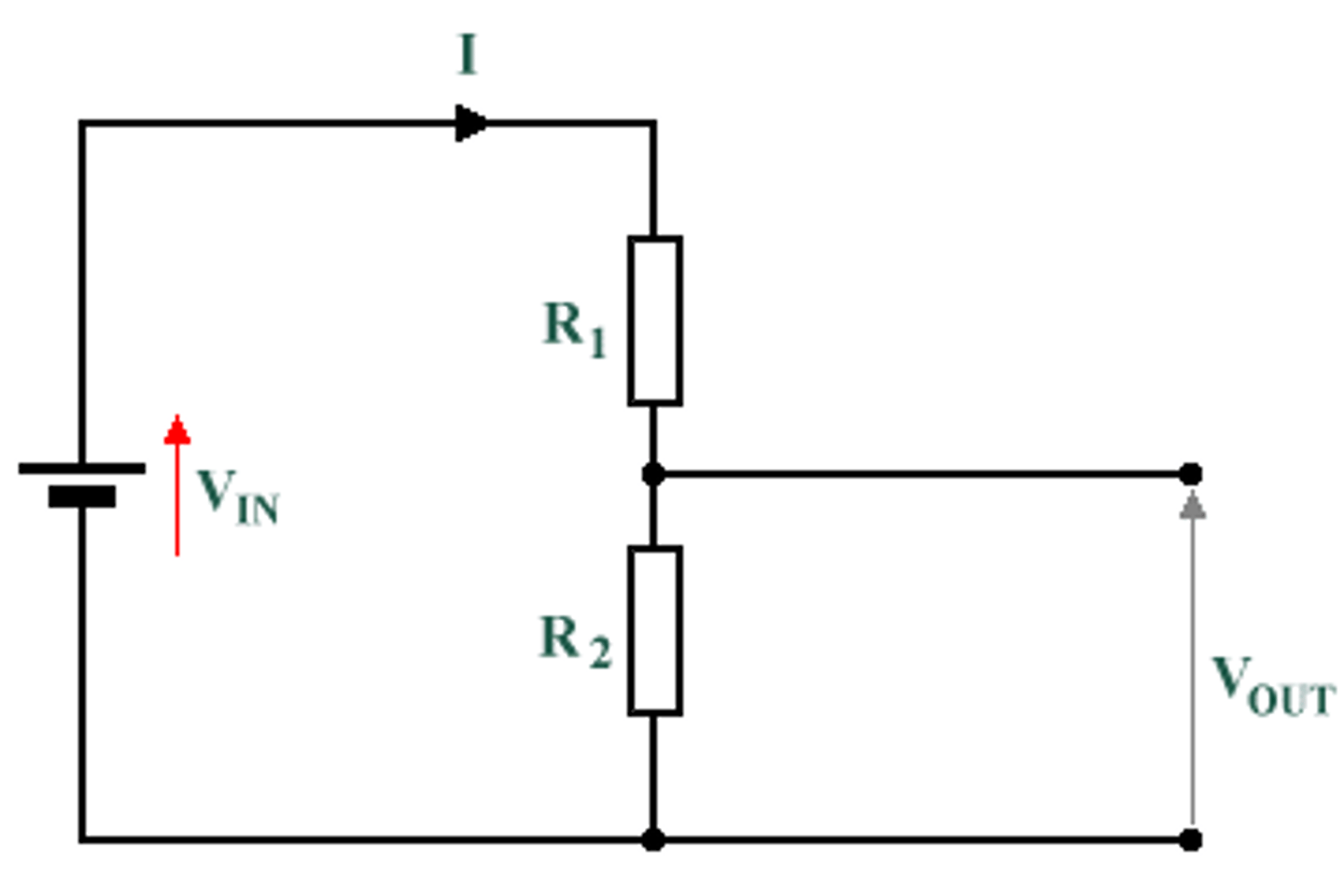
Variable resistors in a potential divider are used to change the voltage supplied to something to a suitable voltage without using a transformer. However, this method wastes power.
Detecting circuits can also be constructed by using a semiconductor, such as an LDR, as the second resistor. This means that when light intensity increases, the output voltage (V-Out) over the LDR will drop below a certain desired level.